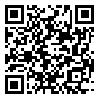Volume 14, Issue 2 (9 2001)
jdm 2001, 14(2): 24-31 |
Back to browse issues page
Download citation:
BibTeX | RIS | EndNote | Medlars | ProCite | Reference Manager | RefWorks
Send citation to:



BibTeX | RIS | EndNote | Medlars | ProCite | Reference Manager | RefWorks
Send citation to:
Kaviyani F. Determination of obsorbed radiation from dental implant radiography. jdm 2001; 14 (2) :24-31
URL: http://jdm.tums.ac.ir/article-1-493-en.html
URL: http://jdm.tums.ac.ir/article-1-493-en.html
Abstract: (11226 Views)
Concern for adverse effects must accompany any use of ionizing radiation. Such concern for the expanded use of CT scanning, conventional tomography and panoramic in dental implant radiology can be expressed by the establishment of absorbed radiation dose for critical tissues (resulting from these radiographic procedures). Potential patient benefit should be weighted against the risk and other disadvantages and/or advantages of a particular radiographic imaging technique. Measurement of dose values can act as a guidline for such risk determinations. The purpose of this study was to measure and compare the absorbed doses of various anatomic sites during these radiographic techniques. The absorbed radiation doses in bone marrow, thyroid gland, salivary gland, eye, brain and skin entrance were determined by placement of lithium fluoride thermoluminescent dosimetres (TLD, S) at selected anatomic sites within and on a humanlike x-ray phantom. The phantom was exposed to radiation from panoramic, linear tomographic and computer- assisted tomographic (CT) stimulated dental implant radiographic examinations. The mean dose was determined for each anatomic site. CT examination showed disruption dose, while panoramic radiography was generally the lowest. The mean absorption value by paratid gland was higher than of other salivary glands.
| Rights and Permissions | |
 |
This work is licensed under a Creative Commons Attribution-NonCommercial 4.0 International License. |




